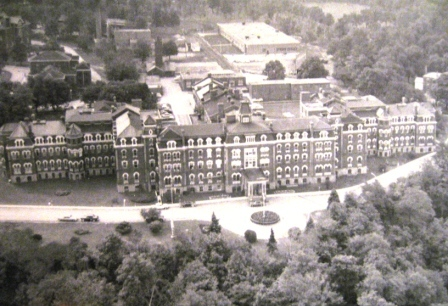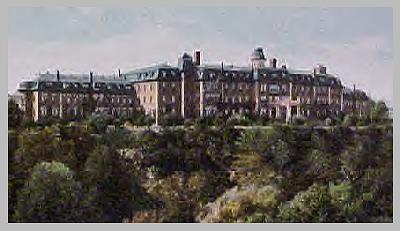
"The beautiful location of the building with its splendid panoramic outlook of city, lake and landscape is quite enchanting,'' writes James Russell, the medical superintendent.
By 1914, the asylum was home to 1,300 patients, and it expanded its mandate to make room, temporarily, for the criminally insane a few years later. At its height, it covered 240 hectares with room for an orchard, a cannery, farms, greenhouses, barns, buildings, and dormitories that stretched from West Fifth to Garth, from the Mountain brow to Limeridge.
What had begun as a place to reform drunks had become one of the biggest asylums in Ontario. "Amid the mental wreckage of a large asylum, the field for observation and scientific study into causes, effects and remedies is most inviting to the student of psychology,'' Russell wrote in his report to the province's asylum inspector headquartered in Toronto.
The Barton building is the large dominant structure on the right. The wings on either side were added in 1879 but the building was razed in 1976. To the left of the Barton is East house, built in 1884for the care of chronic patients. It is now called Century manor and has been designated as a heritage building. Across the gap is Orchard house with its distinctive row of chimneys, it was built in 1888 for the overflow from the Barton building and at one time housed tubercular patients. It was demolished in 1971.


THE HAMILTON ASYLUM
THE BARTON BUILDING